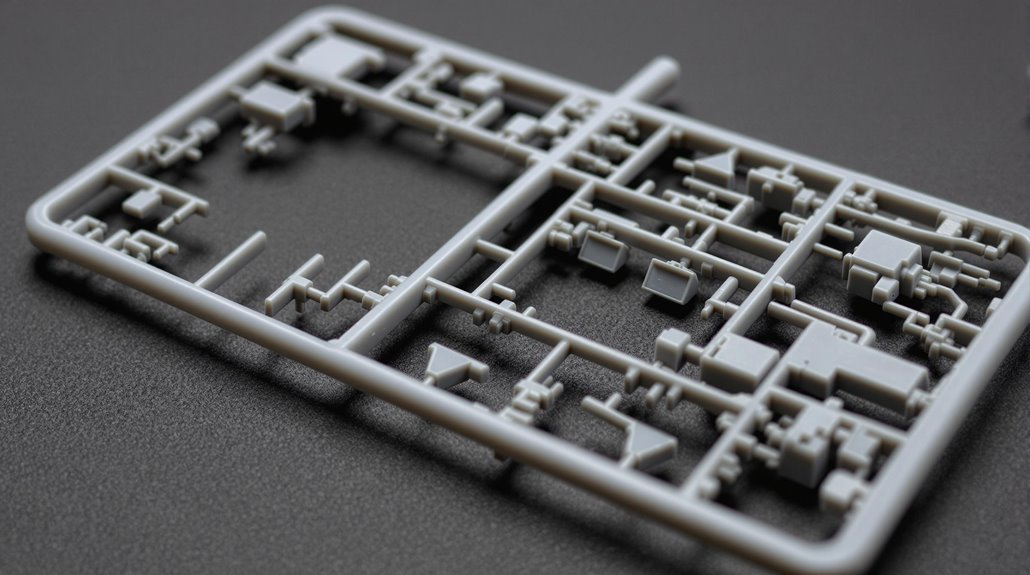Why are they called Gundams?

Gundams hold a special place in the world of anime. Originating from Japan, the term "Gundam" refers to a specific type of giant, human-like fighting machine from the popular science fiction franchise, which began with the TV series "Mobile Suit Gundam" in 1979. These mechas are distinguished by their advanced technology and powerful capabilities, often surpassing standard mobile suits.
The name "Gundam" itself has become iconic, symbolizing not just any mobile suit but a highly advanced, high-performance unit. Initially, there was only one Gundam, but as the franchise expanded, more Gundam-type mobile suits were introduced, further enriching the universe.
Throughout its extensive history, the Gundam franchise has made a significant impact on the genre, changing how audiences perceive giant robots in media. The legacy of Gundam continues to thrive, capturing the imagination of fans around the world with its compelling stories and innovative designs.
Origins of the Name 'Gundam'
The name "Gundam" has roots that reflect a combination of linguistic play and historical influences. These aspects define the unique branding of these iconic robots.
Etymology and Portmanteau
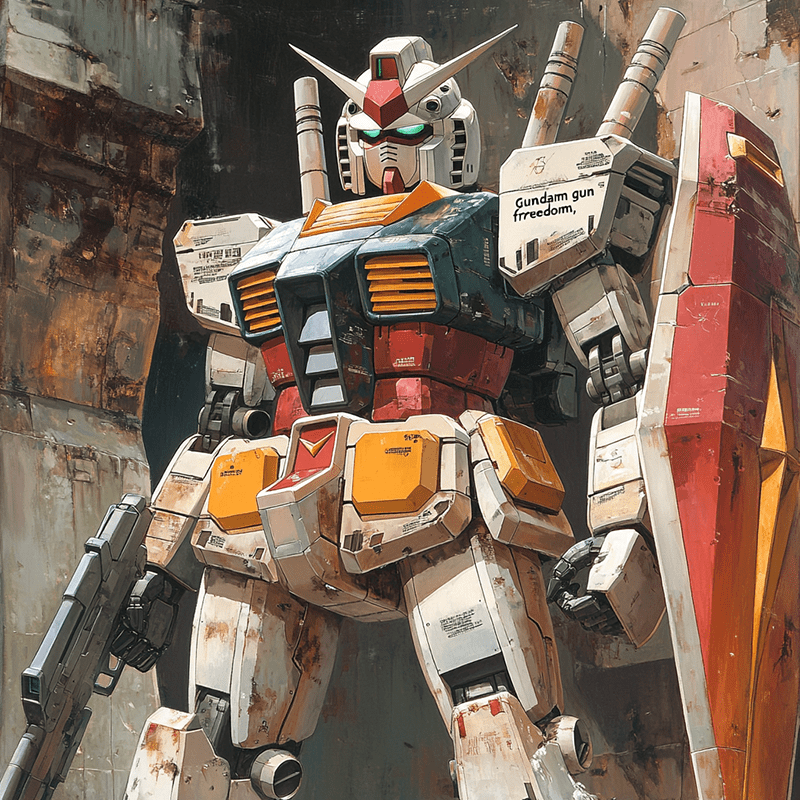
The term "Gundam" is a portmanteau, combining elements to create a new word. It derives from "gun" and "freedom," symbolizing both military might and the concept of liberty.
The creators, led by Yoshiyuki Tomino, intended this name to convey the dual nature of the mobile suits. This blend signifies how these robots can serve both as powerful weapons and as symbols of hope and protection.
The whimsical yet thought-provoking combination has played a significant role in making Gundam a memorable and impactful name across various media.
Influence of Historical Context
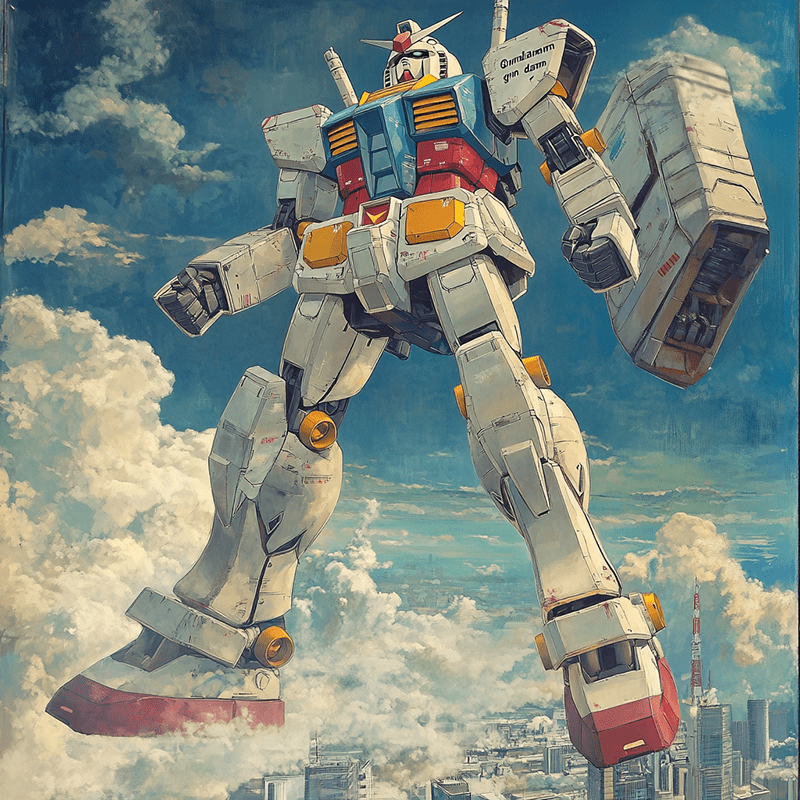
The name "Gundam" also reflects the historical context of its creation in the late 1970s.
Post-World War II Japan experienced a cultural shift that emphasized peace and rebuilding. This shift influenced many aspects of Japanese media, including Gundam. The "gun" part of the name reflects the military aspect, while "dam" was inspired by structures representing protection and defense.
This context provided the backdrop for the name and the themes explored in the Gundam series. It reflects the blending of Japan's past struggles with its aspirations for peace and technological progress.
Evolution of Gundam Series
The Gundam series has evolved significantly since its debut in 1979, transforming from a single anime into a vast franchise with numerous series, movies, and OVA (original video animation) releases.
Debut of Mobile Suit Gundam in 1979
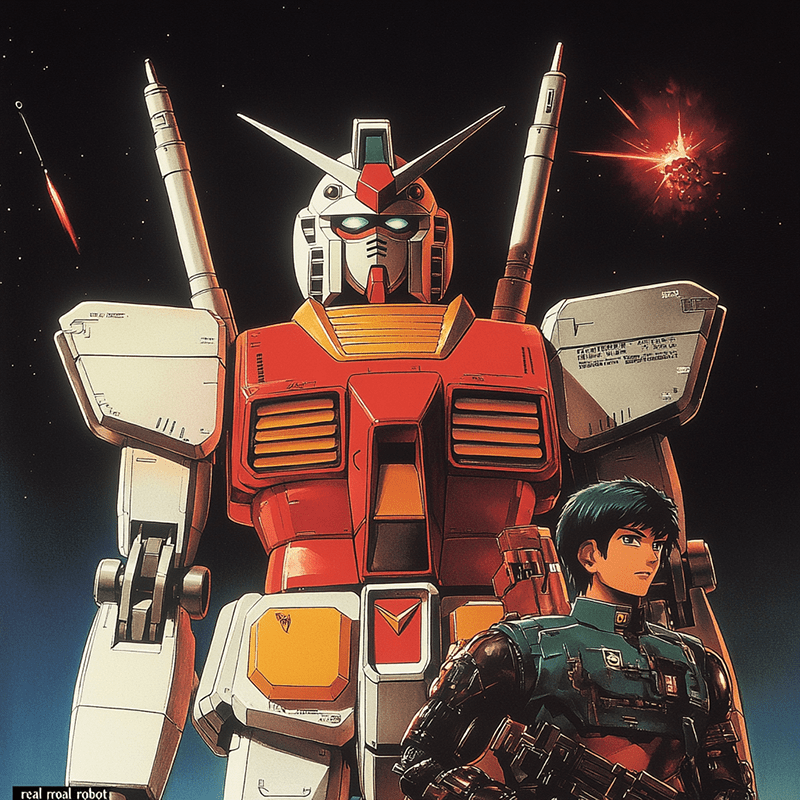
Mobile Suit Gundam first aired in 1979. It introduced the revolutionary concept of "real robot" anime. Unlike previous series, which featured invincible robots, Gundam showcased machines that broke down and needed maintenance. Yoshiyuki Tomino created and directed the series.
Set in the Universal Century timeline, it depicted a war between the Earth Federation and the Principality of Zeon. The story centered on the RX-78-2 Gundam, piloted by Amuro Ray, a civilian who becomes a hero. The show struggled with ratings initially but found success through merchandise sales, especially model kits (Gunpla).
Expansion into a Multi-Series Franchise
Following the success of the original series, Gundam expanded into various sequels and spin-offs. The Universal Century timeline continued with series like Mobile Suit Zeta Gundam and Mobile Suit Gundam ZZ.
The franchise didn't stop there. It created alternate universes such as Mobile Fighter G Gundam and Mobile Suit Gundam Wing, each with unique stories and settings. OVAs like Mobile Suit Gundam: The 08th MS Team added depth to existing narratives. Movies and novels further enriched the storylines.
The Gundam series evolved through constant innovation, offering diverse narratives while maintaining its core themes. This adaptability has kept it relevant for decades, appealing to both old and new fans.
Design and Art of Gundams
Gundams are known for their detailed and unique designs, influenced significantly by both anime art styles and the mecha genre. These designs differentiate Gundams from other mobile suits and make them stand out.
Iconic RX-78-2 Gundam
The RX-78-2 Gundam is one of the most recognizable designs in the Gundam franchise. Designed by Kunio Okawara, it features a mix of red, blue, yellow, and white colors, a scheme that has become a hallmark. The design includes a V-fin antenna on the head, which adds to its iconic look.
Its sleek yet robust appearance sets the standard for future Gundams. The RX-78-2 was the star of the original 1979 Mobile Suit Gundam series and has influenced many subsequent models. The design balances functional military aesthetics with a superhero-like flair, creating an unforgettable visual impact.
Artistic Influences and Mecha Design
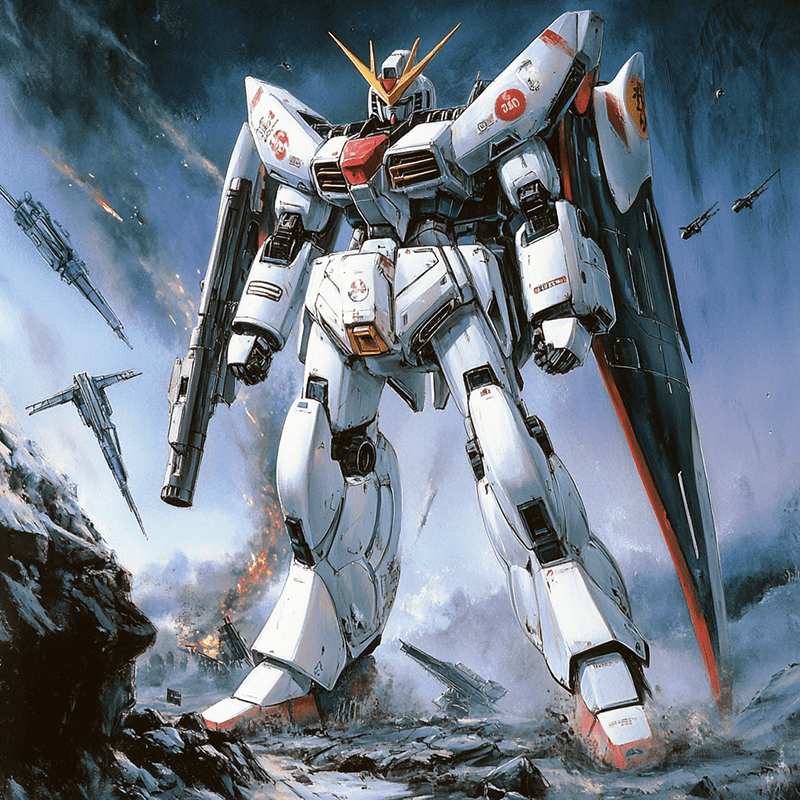
The art and design of Gundams draw heavily from various influences, such as traditional Japanese art and futuristic concepts. The mecha design often includes highly detailed mechanical parts, which contribute to the realistic feel of these giant robots. Anime art styles, characterized by bold lines and dynamic poses, enhance the dramatic presence of these machines.
Gundams often feature complex joints and panel lines, giving viewers a sense of the intricate machinery inside. Animation studios aim to portray the Gundams with a combination of fluid motions and mechanical realism. This fusion makes Gundams look powerful and agile, capturing the imagination of the audience.
In summary, the design and art of Gundams are integral to their identity, setting them apart from other mobile suits and making them an enduring symbol in the mecha genre.
Gundam in Popular Culture
Gundam has significantly influenced both Japanese culture and the international anime scene, leaving a lasting legacy that spans decades. Below, we explore how Gundam has impacted its homeland and its widespread reception globally.
Gundam's Impact on Japanese Culture
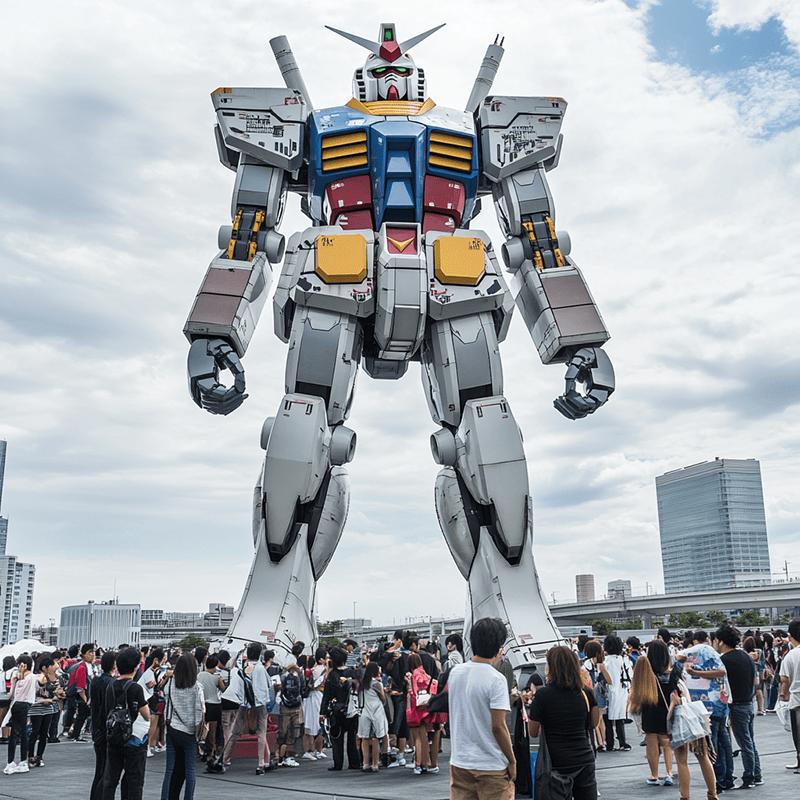
Gundam is a celebrated part of Japanese culture. Originally launched in 1979 with Mobile Suit Gundam, the franchise quickly became a household name. Its influence extends beyond television and movies.
In Odaiba, Tokyo, a life-size Gundam statue stands as a popular tourist attraction. People gather to marvel at its sheer size and attention to detail.
Gundam also appears in various forms of merchandise, from model kits to video games. Developed by Bandai, these products enjoy immense popularity across different age groups.
Gundam has seeped into other sectors as well. For example, the Japanese Self-Defense Force used the Gundam name for a project developing advanced combat systems. Cultural events and expositions often feature Gundam themes, showcasing its importance in contemporary Japanese media culture.
International Reception and Influence
Gundam's influence isn't confined to Japan. Its reach extends globally, particularly to the United States. The Gundam Wing series, released in the mid-1990s, significantly boosted the franchise's international popularity.
The series aired on American TV channels like Cartoon Network, capturing the attention of many young viewers. This made Gundam a familiar name in Western pop culture.
Merchandise sales also surged outside Japan. Model kits, video games, and DVDs found eager audiences in North America and Europe. International conventions often feature Gundam-themed events, further solidifying its global presence.
Gundam-inspired elements appear in numerous works globally. From video games to movies, Gundam has left its mark on various media, proving its enduring appeal across cultures and generations.
Gundam Model Kits and Gunpla
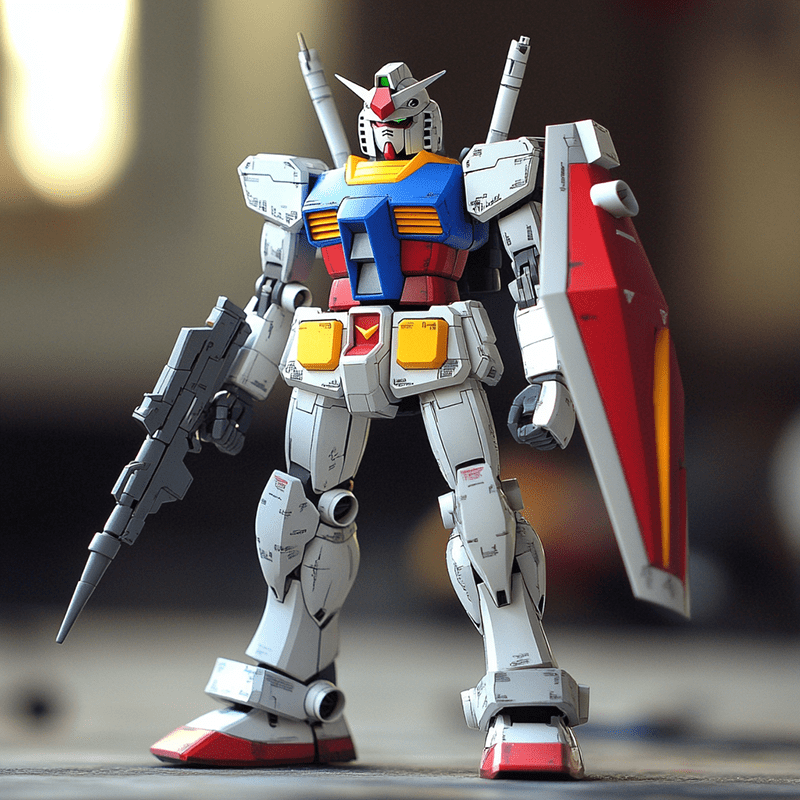
Gundam model kits, known as Gunpla, have become a significant hobby for fans. These kits have intricate designs inspired by the Gundam universe, and Bandai has played a crucial role in producing and popularizing them.
Hobbyist Culture and Custom Creations
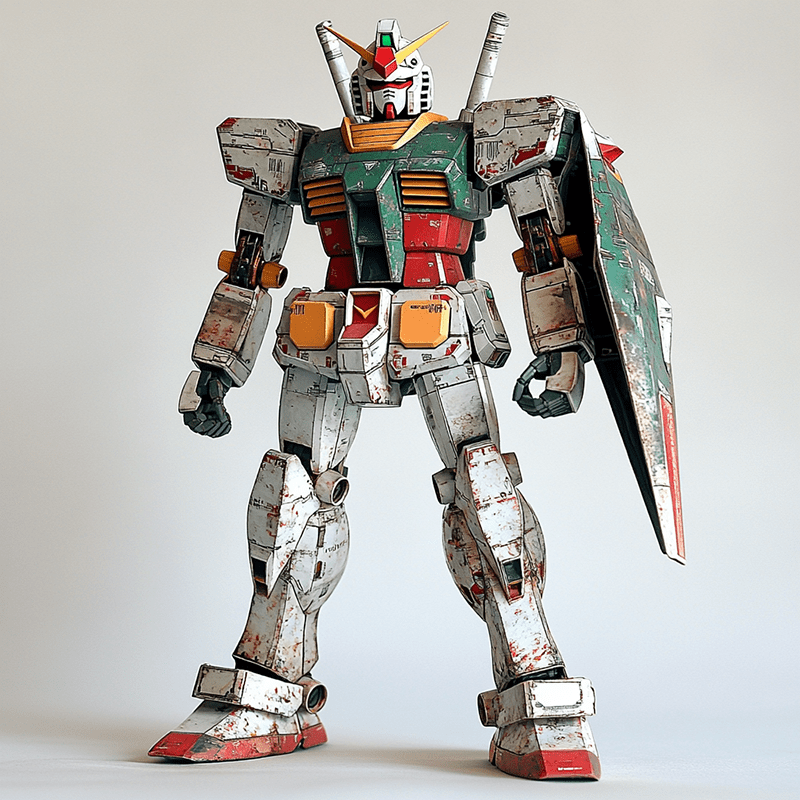
Gunpla has cultivated a rich hobbyist culture. Enthusiasts enjoy building and painting these plastic model kits.
Some fans go further, customizing their models with unique designs and modifications. Competitions and online communities are common, where builders share their creations and techniques. This community aspect enhances the personal and creative experience, making Gunpla both a social and artistic hobby.
Bandai's Role in Merchandising
Bandai is the key company behind Gunpla. They started producing these kits in the early 1980s.
Gunpla kits come in various grades, such as High Grade (HG) and Master Grade (MG), each offering different levels of complexity and detail. Bandai's innovation in engineering these models has made them accessible to both beginners and experienced builders, contributing significantly to Gundam's enduring popularity.
Gundam's Narrative Universe
The Gundam series is renowned for its extensive timeline and alternate universes, each filled with unique stories and mobile suits. These narratives span various eras, such as the Universal Century and the After Colony.
Exploring the Universal Century
The Universal Century (UC) is the core timeline of the Gundam series. It begins with "Mobile Suit Gundam" in UC 0079. In this era, humanity has moved to space colonies. Conflicts often arise between Earth and space-based factions.
"Mobile Suit Gundam Narrative" is set in UC 0097, following the events of "Gundam Unicorn". It explores the ongoing tensions despite attempts at peace. The introduction of Newtypes, humans with psychic abilities, adds another layer to these conflicts. Notable mobile suits like the Gundam Unicorn and Phenex play key roles.
Many Gundam series take place in the UC, providing a rich tapestry of political intrigue, war, and technology.
Alternative Timelines and Stories
Alternative timelines offer different settings and narratives. Future Century features "Mobile Fighter G Gundam," focusing on martial arts with giant robots. After Colony is known for "Gundam Wing," set in a militarized future where Gundams fight for freedom.
After War timeline includes "Gundam X," exploring a post-apocalyptic world. Cosmic Era showcases "Gundam Seed," centered on genetic conflict and advanced mobile suits. These series step away from the UC's focus on space colonization, exploring varied themes and mecha designs.
These diverse timelines allow the Gundam franchise to reinvent itself, captivating audiences with fresh and innovative takes on the mecha genre.
Themes and Concepts in Gundam
Gundam explores intricate themes such as the difference between realistic and fantastical robot design, as well as the evolving roles of advanced humans in its universe.
Real Robot vs. Super Robot Genre
The Gundam series stands out by blending elements of the real robot genre and the super robot genre. Real robots are depicted as military machines with practical limitations, requiring maintenance and operated by trained pilots. These machines often face realistic issues like running out of fuel or ammunition.
Super robots, on the other hand, are usually portrayed as invincible and driven by fantastical power sources. They often possess extraordinary abilities and are controlled by a single hero without much focus on technical constraints.
In Gundam, mobile suits, including the iconic Gundams, embody the real robot approach. They are powerful but not invincible, emphasizing tactical combat rather than sheer power. This blend offers depth, making the series both exciting and grounded.
The Role of Newtypes and Advanced Humans
A significant concept in Gundam is that of Newtypes. Introduced in the original series, Newtypes are humans who have adapted to living in space, developing heightened mental and sensory abilities. They are depicted as the next step in human evolution, often having the ability to understand and react faster in battle.
Advanced humans like Newtypes are pivotal in Gundam's stories. They symbolize hope for a better future but also the potential for greater conflict. Newtypes, such as Amuro Ray and Char Aznable, have unique connections to their mobile suits, making them formidable pilots.
This exploration of Newtypes and their abilities adds a philosophical layer to Gundam, questioning the direction of human evolution and the moral implications of such advancements.
Adaptations and Spin-Offs
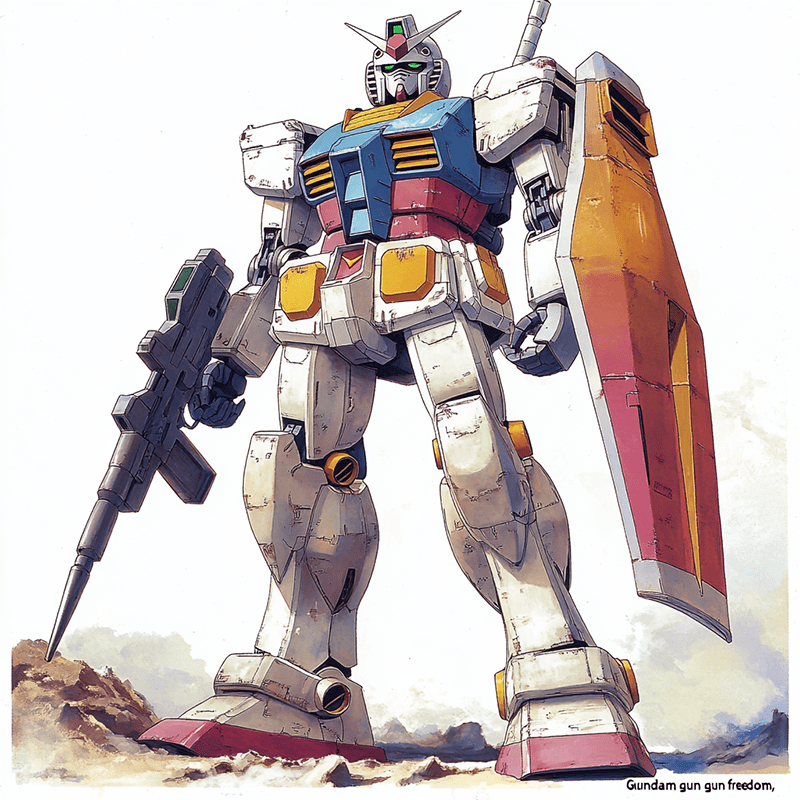
The Gundam franchise has not only been limited to TV series. This vast universe has expanded through various adaptations and spin-offs, including novels, manga, and films. Each adaptation brings unique elements to the story, keeping fans engaged.
From TV Series to Novels and Manga
Gundam began as a TV series in 1979 with "Mobile Suit Gundam." This introduced viewers to the concept of giant robots in warfare. Following its success, many other TV series were created, capturing different timelines and stories within the Gundam universe.
Manga adaptations followed, providing detailed artwork and storylines that often complemented the TV series. Novels provided a deeper dive into character development and plot intricacies, attracting those who enjoy exploring the Gundam world through text.
Films and On-Screen Adaptations
Numerous films have been made, retelling or expanding on TV series plotlines. These include adaptations like "Gundam Wing: Endless Waltz," a sequel to the "Gundam Wing" series. Some movies provide alternative versions of events, offering fresh perspectives to well-known stories.
The franchise also explores original video animations (OVAs) that link series together or explore side stories. Examples include "Mobile Suit Gundam: The 08th MS Team," offering a more ground-level view of the Gundam battles.
Across these adaptations, the animation quality has evolved, showcasing advancements in anime technology and storytelling, ensuring Gundam continues to resonate with its audience.
Gundam Beyond Entertainment
The impact of the Gundam series goes far beyond its success as a form of media. It has influenced science and technology, and played an educational and cultural role in many societies.
Science and Technological Inspirations
Gundam has inspired real-world technological advancements. Engineers and scientists have drawn ideas from the series to create humanoid robots. The ASIMO robot by Honda is one example that echoes Gundam’s vision of mobile suits.
The series also explores futuristic concepts like space colonies and advanced materials. Gundanium, a fictional substance resistant to damage, sparks discussions about creating stronger, more durable materials. Furthermore, Gundam-themed research has led to experiments in robotics and artificial intelligence.
Educational and Cultural Significance

Gundam contributes to education, especially in fields related to engineering and science fiction. It engages students in STEM subjects. Teachers use it as a fun way to explain principles of mechanics and physics.
Culturally, Gundam holds a special place in Japan and abroad. It symbolizes innovation and technological progress. Gundam statues and models, like the life-sized one in Tokyo, attract millions of visitors every year, blending popular culture with national pride. The franchise also promotes international collaboration, with Gundam models being popular among hobbyists worldwide.



